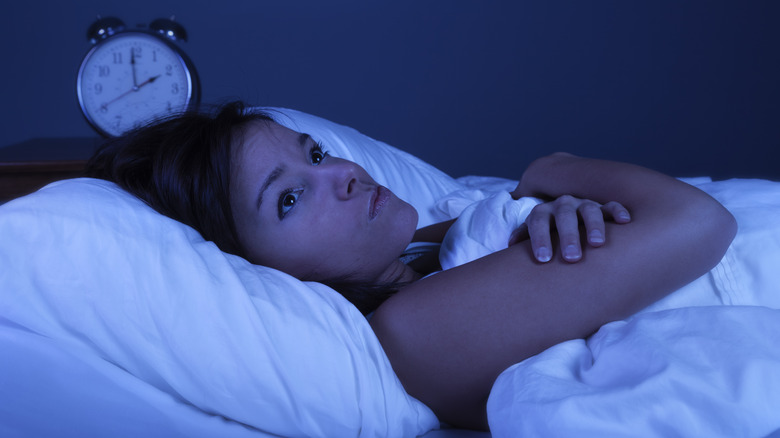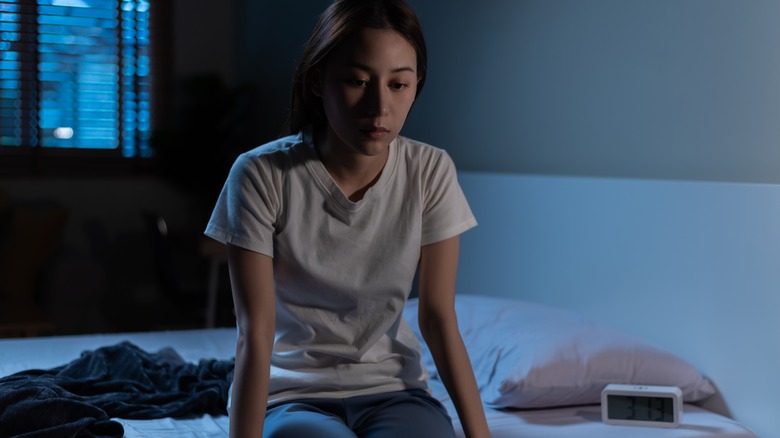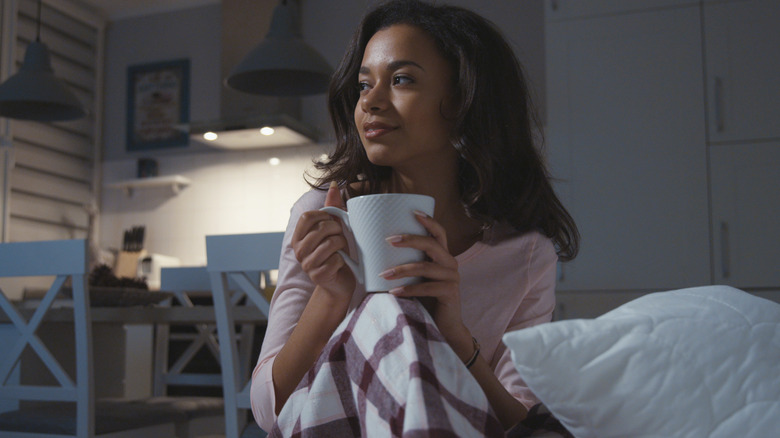Can't Seem To Fall Asleep? The Quarter-Hour Sleep Rule Could Be The Trick You Need
You already know that sleep is important. Those hours spent in dreamland each night help you form memories, regulate hormones, rest your hard-working heart, and metabolize food properly, according to the National Heart, Lung, and Blood Institute. In other words, your body needs shut-eye to function.
However, your body — and mind — might not always make it easy to fall asleep. Even if you're ready to snooze, your system can sometimes remain alert and unable to wind down. If this happens to you occasionally, as it does for many adults, you might be dealing with acute insomnia (via Mayo Clinic). When sleeplessness becomes a common occurrence, though, it's known as chronic insomnia.
Whether you toss and turn rarely or regularly, it's crucial to find a way to fall asleep. But how can you do that when your body seems to have other nighttime plans? One trick might reverse your insomnia, and it's probably the opposite of what you've been doing all along.
Awake after 15 minutes? Get out of bed
When you can't sleep, do you toss and turn in bed, hoping to find the magic position to finally catch some ZZZs? Or do you lie there, scrolling through your phone until you're 300 videos deep in your TikTok feed? It's time to break those habits, say sleep experts. According to a 2010 study published in the Journal of Sleep Research, the "quarter-hour rule" could be the secret to overcoming episodes of insomnia.
The rule is simple — if you've been trying to fall asleep for 15 minutes in bed, get up until you're certain you can fall asleep. Researchers urge against watching the clock to know when 15 minutes have passed. Instead, use your best guess to determine if you've spent a quarter-hour in bed. If you go over the 15-minute mark, that's okay — the point is to avoid spending so much time trying to sleep that you become stressed (which, of course, will only make it harder to relax).
"The problem with staying in bed for any appreciable amount of time is that this reinforces sleeplessness, physiologically and psychologically," Dr. Michael Perlis, director of the behavioral sleep medicine program at the University of Pennsylvania, told WebMD. The quarter-hour rule will keep you from associating your bed with insomnia, potentially freeing you from those frustrating sleep anxiety jitters.
What to do instead of staying in bed
You've decided to peel yourself out of your weighted blanket cocoon after 15 minutes of staring at the ceiling. Now what? To up your chances of getting back to bed quickly, resist the urge to use your phone or other bright devices. The blue light emitted from screens can suppress melatonin in the body, making it harder to fall asleep, per Harvard Health Publishing. Besides stashing away your phone and laptop, consider dimming the lights in your home so your body knows it's time to wind down.
Then, turn to a relaxing activity that doesn't involve much physical movement. Meditating, breathing exercises, knitting, or listening to a podcast (ideally one that isn't too stimulating, so save the true crime shows for another time) can all do the trick. If you decide to grab a drink, skip caffeine and alcohol and stick to water instead. If you're hungry, it's okay to snack, but do so mindfully. "Cookies, candy bars and anything high in refined sugar will reduce your serotonin levels, making it harder for you to fall asleep," registered dietitian Julia Zumpano explained to Cleveland Clinic.
Proponents of the quarter-hour rule suggest only returning to bed when you believe sleep is imminent, and Dr. Michael Perlis agrees, telling WebMD that it's best to stay out of the bedroom for at least 30 minutes. Once you feel heavy-eyed, you'll know it's time to head back to bed.


